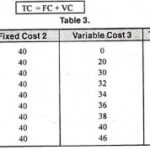
Recording entails noting the date, amount, and location of every transaction. Next, you’ll break setting up the zip down (or analyze) the purpose of each transaction. Without them, you wouldn’t be able to do things like plan expenses, secure loans, or sell your business. Compare the receiving log to accounts payable to ensure that all supplier invoices have been received. Use the formula above to help calculate your retained earnings balance at the end of each period.
Income statement
A cash flow projection lets you estimate the money you expect to flow in and out of your business in the future. Forecasting your business’s future cash flow can help you predict financial problems and give you a clear picture of your company’s financial future. Your cash flow statement, or statement of cash flows, is all of your business’s incoming and outgoing cash. Basically, your cash flow statement shows you how much cash flows in and out of your business. Your statement of cash flows only records the actual cash your company has.
- Audit opinions are the conclusions auditors reach after reviewing a company’s financial statements.
- The regulatory framework, consisting of accounting standards such as GAAP and IFRS, establishes guidelines and rules for financial statement preparation.
- They are interrelated, as the performance and financial activities captured in the income statement and statement of cash flows affect the balance sheet and statement of stockholders’ equity.
- The old-school method was to record these transactions in a journal; however, using accounting software means you can just enter transaction details into the accounting system – the system takes care of the rest.
- If you use accounting software, posting to the ledger is usually done automatically in the background.
Cash flow gives you insights into your business’s sources and uses of cash. Maintaining a healthy cash balance – aka, enough but not too much – is mission-critical. Calculate the closing balance in stockholders’ equity and input this figure into the balance sheet. Don’t add any other types of income here, such as income from rent or interest — that’s not revenue. Each what are the 4 major business organization forms one of these documents gives stakeholders such as investors, creditors, employees — even competitors — valuable insights about where a business stands financially. Financial statements are essential tools for decision-making and financial analysis, aiding in assessing a company’s worth and potential investment attractiveness.
Balance Sheet
Your liabilities can either be current (short-term) or noncurrent (long-term). Some examples of liabilities include accounts payable, accrued expenses, and long-term loan debt. There are additional line items in this section as well if you’re using the indirect method. You’ll need to subtract gains and add back losses on the sale of assets.
Step 4: Prepare adjusting entries at the end of the period

The income statement, the statement of retained earnings, the balance sheet, and the statement of cash flows all make up your financial statements. Also, information from the previous statement is used to develop the next one. Auditors provide assurance on the financial statements by issuing audit opinions that indicate the level of confidence in the accuracy and fairness of the financial statements. This process helps maintain trust among stakeholders and ensures that the financial statement preparation adheres to the required guidelines and principles. After you generate your income statement and statement of retained earnings, it’s time to create your business balance sheet. Again, your balance sheet lists all of your assets, liabilities, and equity.
Is keeping up with the accounting cycle taking up too much of your time? With Bench, you get access to your own expert bookkeeper to collaborate with as you grow your business. Our secure bank connections automatically import all of your transactions for up-to-date financial reporting without lifting a finger. Book review calls or send messages to get prompt answers to your questions so your financial health is never a mystery. First, an income statement can be prepared using information from the revenue and expense account sections of the accounts receivable and accounts payable trial balance. Review the balance sheet accounts, and use journal entries to adjust account balances to match the supporting detail.
Closing the books
The ledger is a large, numbered list showing all your company’s transactions and how they affect each of your business’s individual accounts. After you generate your final financial statement, use your statements to track your business’s financial health and make smart financial decisions. Check out our FREE guide, Use Financial Statements to Assess the Health of Your Business, to learn more about the different types of financial statements for your business. If your statement of retained earnings is positive, you have extra money to pay off debts or purchase additional assets. Your balance sheet is a big indicator of your company’s current and future financial health. You can also use your balance sheet to help you make guided financial decisions.
Accrue an expense for any wages earned but not yet paid as of the end of the reporting period. Cash flow from investing activities includes cash received from the sale of securities and cash paid to buy new assets like land and equipment, among other things. Cash flow from operating activities is the sum of cash inflow and outflow from activities like collection from debtors, payment to creditors, and taxes paid. Shareholders’ equity is money that belongs to the company’s owners (equity shareholders) and preference shareholders. For example, if the company revalues an asset and it’s worth less, it’s the company’s loss.

0 Comments